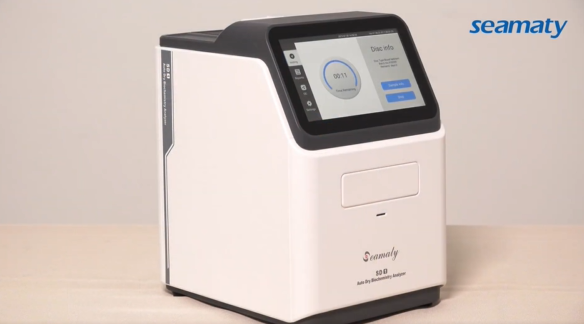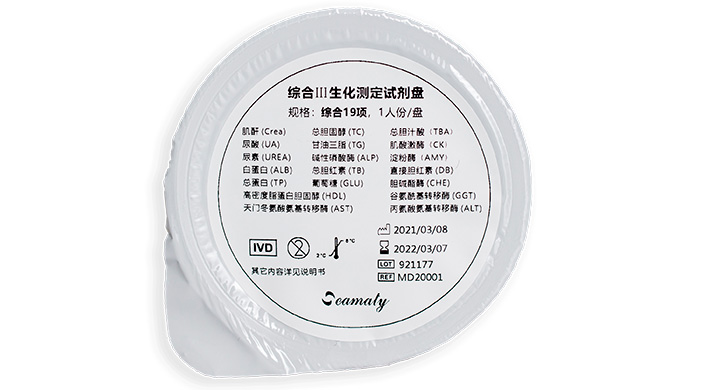release time:2023-06-02 13:39:17
Medical lab equipment distribution plays a crucial role in the healthcare industry, ensuring that hospitals, clinics, and research facilities have access to the necessary tools and technologies to provide accurate diagnoses and effective treatment. With the rapid pace of technological advancement and evolving market dynamics, medical lab equipment distributors must adapt to changing trends and identify new opportunities to stay competitive in the industry.
This article will explore the key trends and opportunities for medical lab equipment distributors, as well as the challenges they face in the rapidly evolving industry.
One of the most significant trends in medical lab equipment distribution is the impact of technological advancements on the industry. As medical equipment becomes increasingly sophisticated, it also becomes more complex and requires specialized training and expertise to operate effectively. This has led to a growing demand for training and education services to help healthcare professionals use and maintain medical equipment.
Another trend in medical lab equipment distribution is the increasing demand for point-of-care testing (POCT) devices. These devices enable medical professionals to perform diagnostic tests and obtain results quickly, without the need for laboratory analysis. This can be particularly valuable in remote or underserved areas where access to lab facilities is limited. POCT devices are also becoming more affordable, making them more accessible to a wider range of healthcare providers.
The rise of e-commerce and online marketplaces is another trend impacting medical lab equipment distribution. Online platforms enable medical equipment manufacturers and distributors to reach a broader customer base, while also providing customers with greater convenience and flexibility in purchasing equipment. Online marketplaces also provide distributors with access to valuable data and analytics, which can help them optimize their supply chains and improve customer service.
Finally, the growing importance of data and analytics in distribution is another key trend to watch. Distributors are using data to optimize inventory management, improve delivery times, and provide better customer service. By leveraging data and analytics, distributors can better understand customer needs and preferences, anticipate demand, and make informed decisions about product selection and pricing. And it also worth noting that the top 10 trends in the in vitro diagnostics industry in 2023.

Despite the challenges facing the medical lab equipment distribution industry, there are also many opportunities for distributors to grow and expand their businesses. One significant opportunity is to expand into emerging markets. As healthcare systems in developing countries continue to improve, there is a growing demand for medical equipment and technologies. Distributors who can establish a presence in these markets can capitalize on this demand and establish a strong foothold in the industry.
Diversification of product offerings is another opportunity for medical lab equipment distributors. By offering a broader range of products, distributors can cater to the diverse needs and preferences of their customers. This can include everything from traditional lab equipment to POCT devices and digital health technologies.
Collaboration with manufacturers and other distributors is also an opportunity for medical lab equipment distributors. By working together, manufacturers and distributors can share expertise, resources, and best practices to improve the quality and reliability of medical equipment and optimize the distribution process.
Finally, the adoption of digital technologies is an opportunity for medical lab equipment distributors to streamline their distribution processes and improve customer service. Technologies such as automation, artificial intelligence, and the Internet of Things (IoT) can help distributors optimize inventory management, reduce delivery times, and provide customers with real-time data and analytics to help them make informed purchasing decisions.
While there are many opportunities for medical lab equipment distributors, there are also several challenges they face in the rapidly evolving industry. One of the most significant challenges is regulatory compliance and licensing requirements. Medical equipment must meet strict regulatory standards to ensure patient safety, and distributors must navigate complex regulatory frameworks to ensure compliance.
Increased competition is also a challenge facing medical lab equipment distributors. With the rise of e-commerce and online marketplaces, distributors must compete with global players and local manufacturers who can offer lower prices and faster delivery times. This puts pressure on distributors to find ways to differentiate themselves and provide greater value to customers.
Price pressures and the need for cost-effective solutions are also a challenge for medical lab equipment distributors. With healthcare costs continuing to rise, customers are looking for affordable solutions that still meet their needs. Distributors must find ways to offer competitive pricing while still maintaining the quality and reliability of their products.
Finally, the lack of skilled workforce and technical expertise is a challenge facing medical lab equipment distributors. As medical equipment becomes more sophisticated, it requires specialized training and expertise to operate effectively. Distributors must invest in training and education programs to ensure that healthcare professionals have the knowledge and skills needed to use and maintain medical equipment.
The medical lab equipment distribution industry is rapidly evolving, driven by technological advancements, changing market dynamics, and increasing demand for affordable and accessible healthcare. To stay ahead in this industry, medical lab equipment distributors must be aware of the key trends and opportunities and find ways to adapt to changing market conditions.
By expanding into emerging markets, diversifying product offerings, collaborating with manufacturers and other distributors, and adopting digital technologies, distributors can stay competitive and provide greater value to customers. However, they must also navigate regulatory compliance and licensing requirements, increased competition, price pressures, and the need for skilled workforce and technical expertise.
In conclusion, the future of medical lab equipment distribution is full of both challenges and opportunities. Distributors who can adapt to changing market conditions, embrace new technologies, and provide innovative solutions to meet customer needs will be well-positioned for success in the years to come.

2024-01-29
Discover unparalleled speed and accuracy in veterinary care with handheld blood gas electrolyte analyzer - every animal hospital’s must-have. Elevate patient outcomes, reduce stress for animals, and enhance client satisfaction with Seamaty VG1.

2022-01-25
Here are some examples of test instruments commonly used in medical testing laboratories, some very basic consumables and supporting equipment. Hope to help you buy laboratory equipment.

2021-11-12
With the popularity of the application of dry biochemistry analyzer, it can test more and more items. Here is an example of the Seamaty Automatic Dry Chemistry Analyzer SD1. Let's see what items it can test.